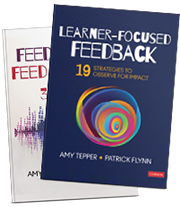Connecticut Gov. Dannel Malloy announced earlier this month that he is calling for a “slowing down of new stricter evaluations for teachers” and is “establishing a task force to study implementation of the Common Core State Standards.” It’s about “time.”
Funny thing is, it’s always been about “time.” It is less, however, about “more time” than it is about “taking time” at all levels of our educational system. But time for what in particular? It is about the State Department of Education and PEAC taking the time to adequately reflect, prepare, and communicate a strategic implementation model that provides guidance and support to districts. It is about district leaders taking the time to organize and provide professional learning opportunities that authentically introduce the concepts and shifts in practice associated with CCSS and SBAC. It is about teachers and administrators throughout CT taking the time to engage in substantive, meaningful conversations about shifts in instructional practice so that they have the chance to learn and grow within a changing educational environment. It is about taking the time to ensure that teacher evaluation models are designed to support educator professional growth directly aligned to newly established expectations of CCSS versus the creation of punitive, high stakes programs of professional accountability.
What it is not about is a reactive answer of “slowing down” the process. It is instead about designing that process through structured dialogue, across all levels, that focused on the importance of…
- learning theories (both new and established) that support student success;
- how what several teachers already do in their classrooms align with these theories;
- where new strategies can and should be implemented to support student success in college, career, and life;
- how teachers and administrators can leverage each other to challenge and support their professional growth;
- how classroom and school environments can and should change to support students of the 21st Century; and
- how CCSS and the performance expectations outlined in the CCT (Common Core of Teaching) and CCL (Common Core of Leading) can be aligned to drive towards those environments.
As an educator who began his career in the midst of the standards-based instruction movement almost 20 years ago, I have come to understand that it is more about how we engage standards versus the standards themselves. It does not matter if the standards we are referring to are new student standards as in the CCSS or new educator performance standards as in the CCT and CCL. As teachers employ standards, it is expected that they plan strategically, rooting those plans in instructional practice that best support the learning of all students. As every teacher will tell you, this type of planning takes time. As the State Department of Education outlines new educator standards and guidelines, they too need the time to plan a strategic, well-structured rollout. Up to this point, these well-intentioned educators have been against an impossible timeline and it is with great hope that Gov. Malloy’s “slow down” will allow for a renewed chance for the State to communicate and execute a plan for on-going, embedded support to districts.
As new plans are provided, district leadership needs to then be responsive and take time to design a supportive professional learning program. As applied in our classrooms, we expect that teachers understand the policies and expectations of the district in combination with the learning needs of their students to provide instruction based upon formative performance assessment as well as student input. The same needs to be expected from district leadership. Teacher and administrator input about professional learning needs in the face of CCSS, SBAC, CCT and CCL should drive implementation of professional learning, ensuring ownership of change at a local level. Aligning this with data about performance and practice should generate differentiated plans at a district, school, sub-group, and classroom level.
As professional learning opportunities are established and offered, teachers and administrators need to engage those as part of a learning process, not as an indictment of their practice. They need to take time to learn new applications of classroom and leadership practice that support a generation of students far different than themselves and who are entering a future riddled with uncertainty. We need to embody the very mindset of learning we work so hard to instill in our students. We need to establish clear goals for our learning and our students’ learning so that the conversations and the professional dialogue are rooted in the fundamental concept of school itself – continuous, meaningful learning to support lifelong success and happiness.
None of this will occur without a strategic use of time at all levels going forward. None of this will occur unless we take the time to ensure that the relationship between an evaluator and the teacher or administrator is one of trust and commitment to learning. When “grades” on performance are nothing more than a snapshot in time to assist us in taking the next step in our lives as professionals, colleagues and as people. This represents the type of growth mindset we wish of every student walking through the hallways of our state’s schools. That will only occur when we engage that mindset at all levels of our state educational community and as a fundamental criterion for reform itself.





Leave a Reply